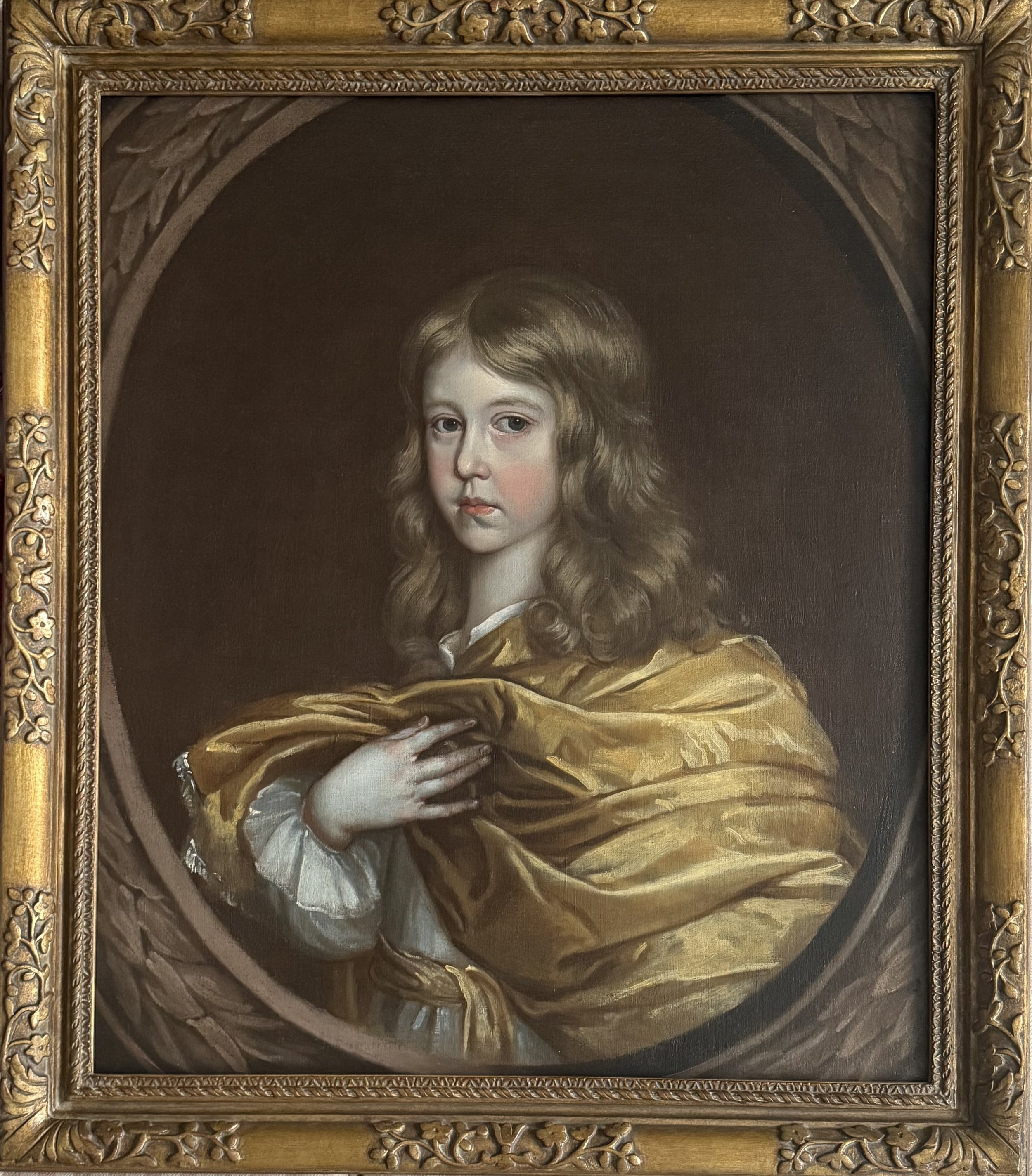
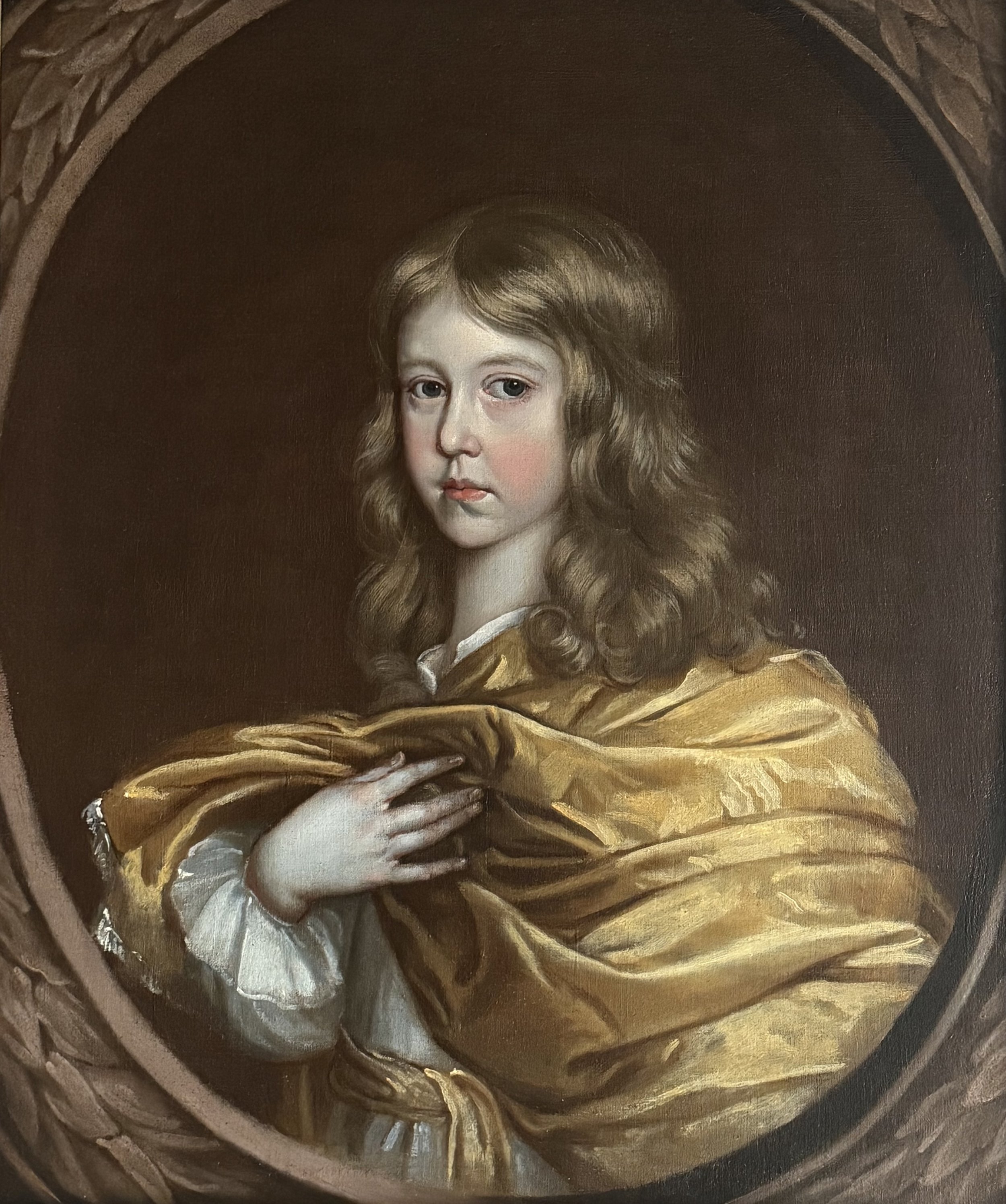
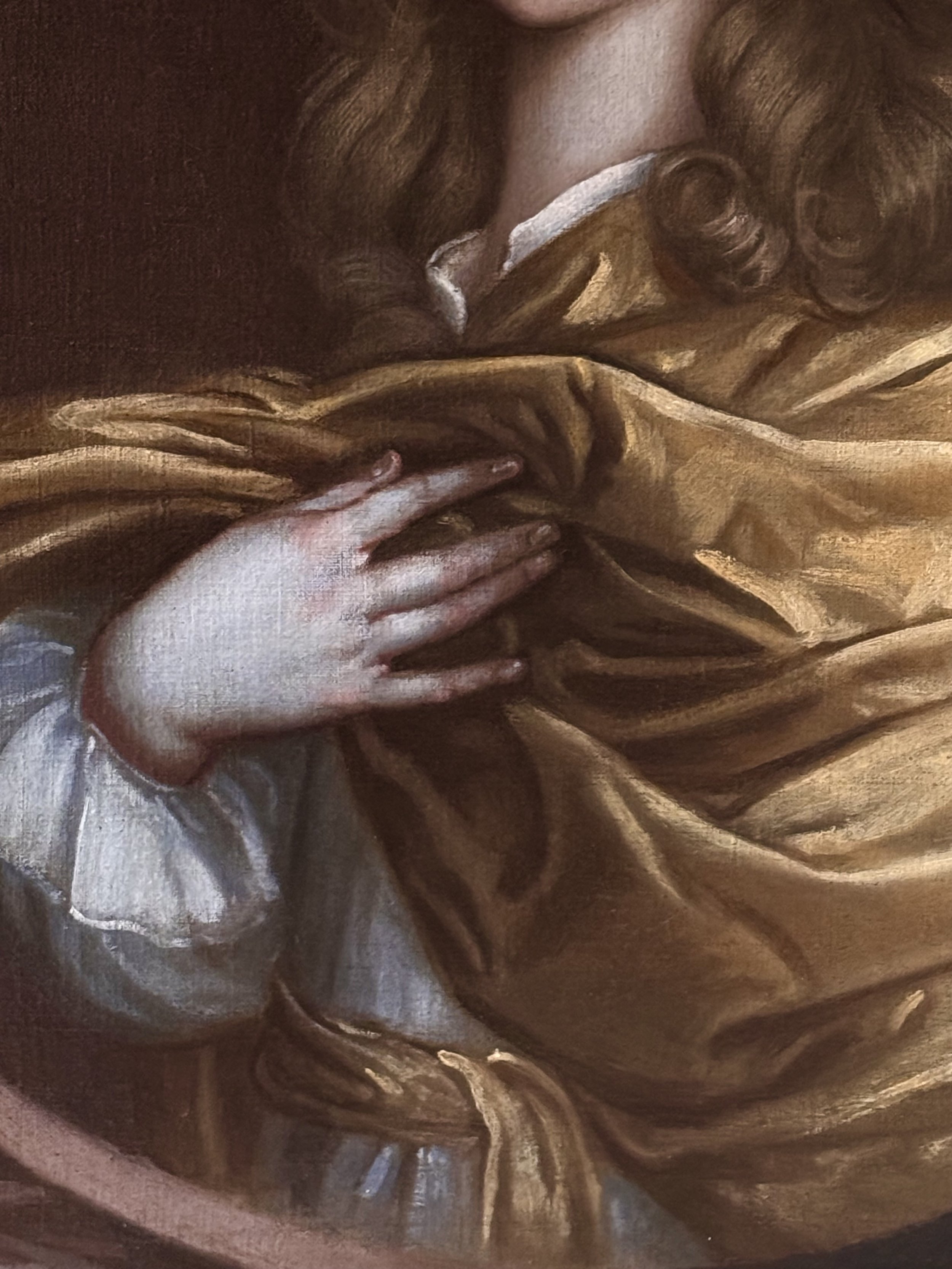
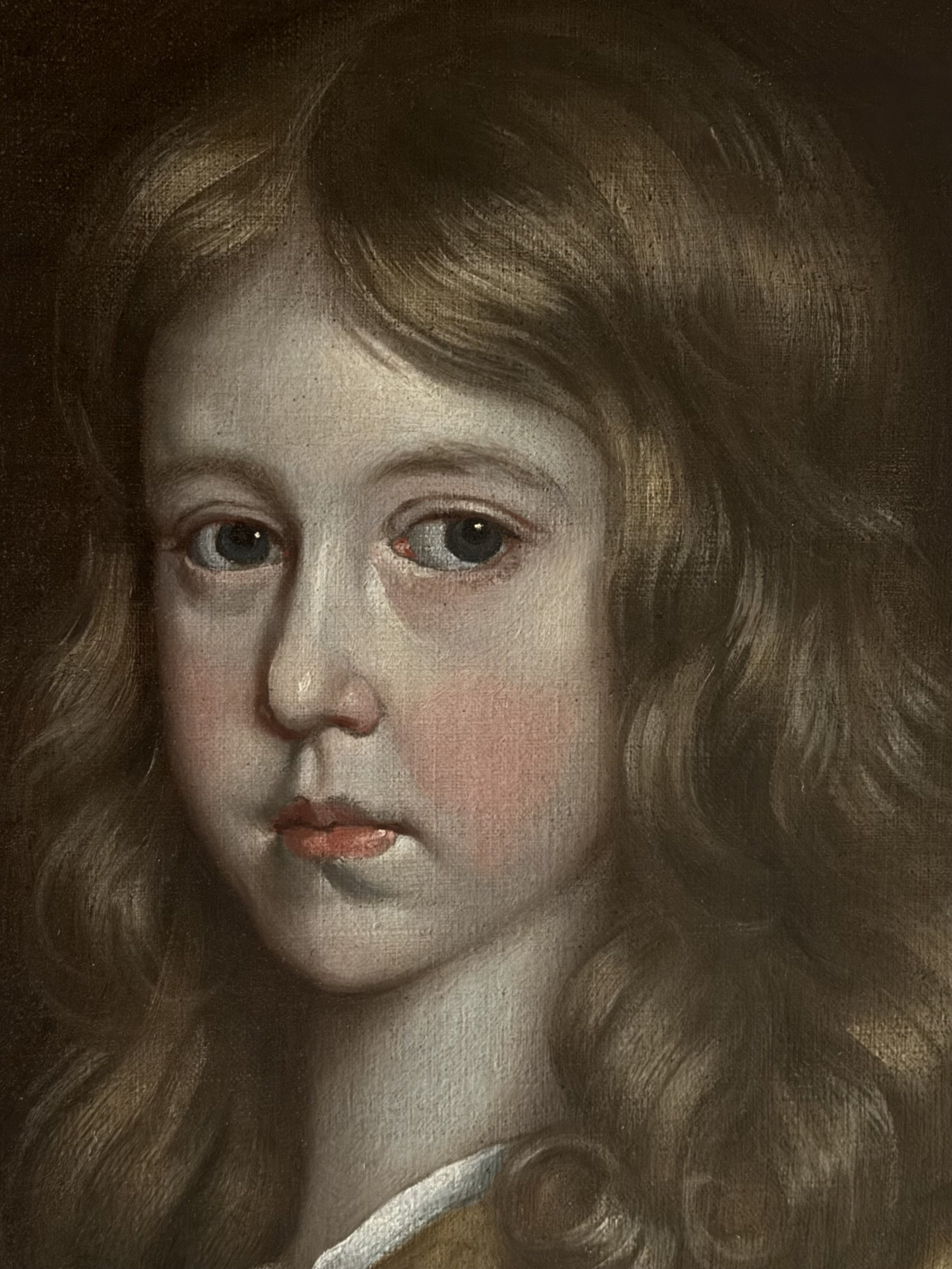
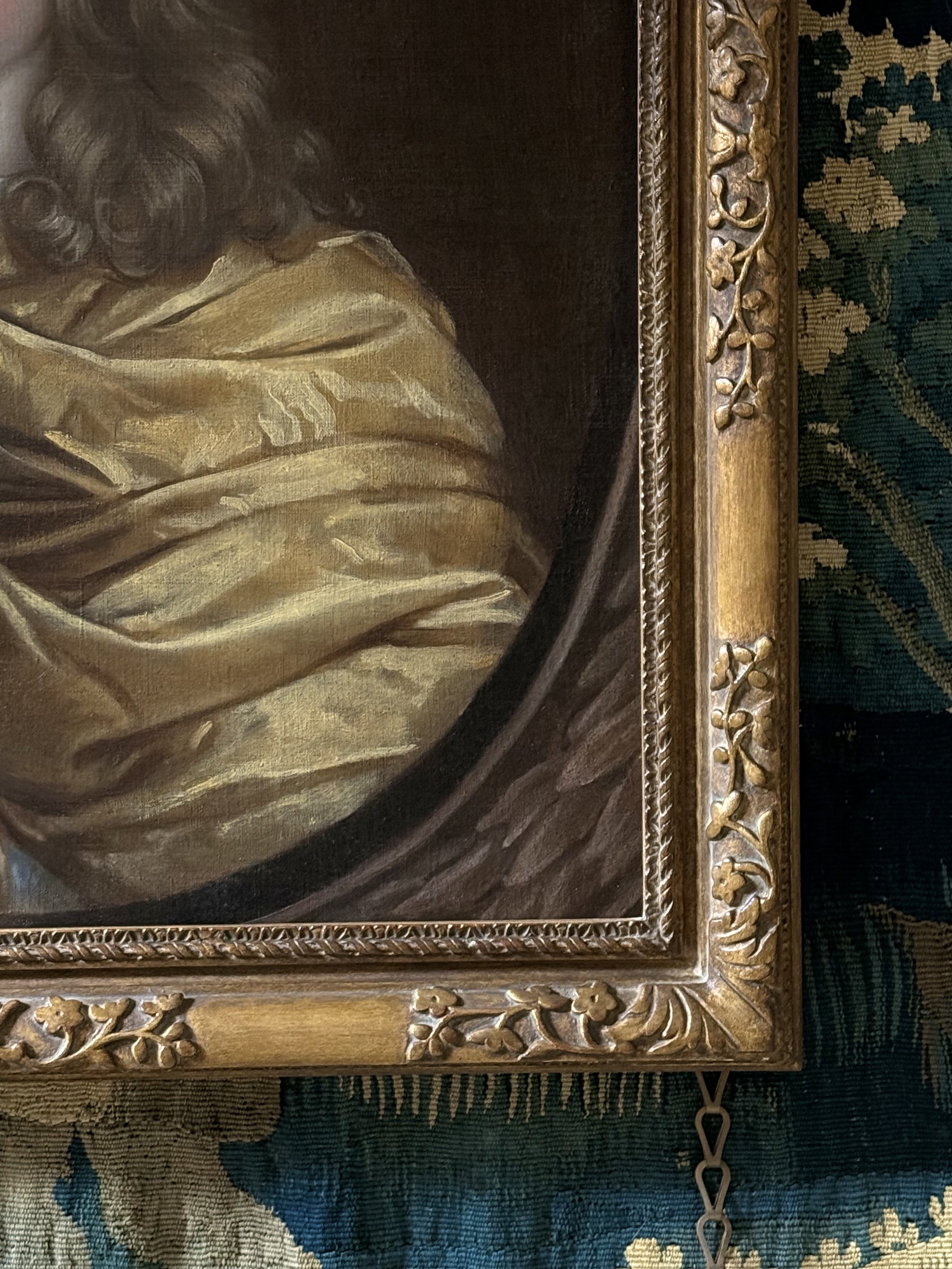

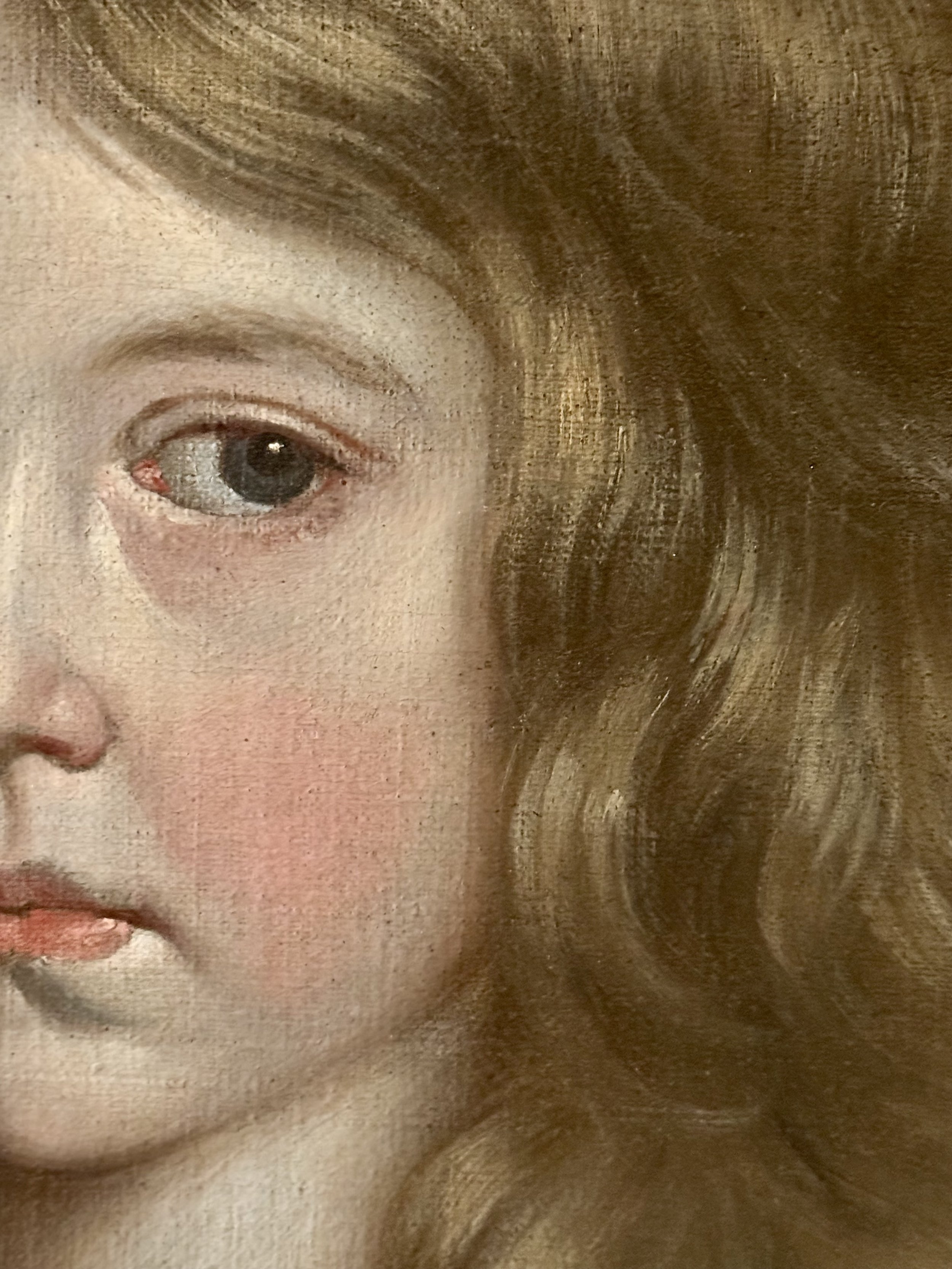

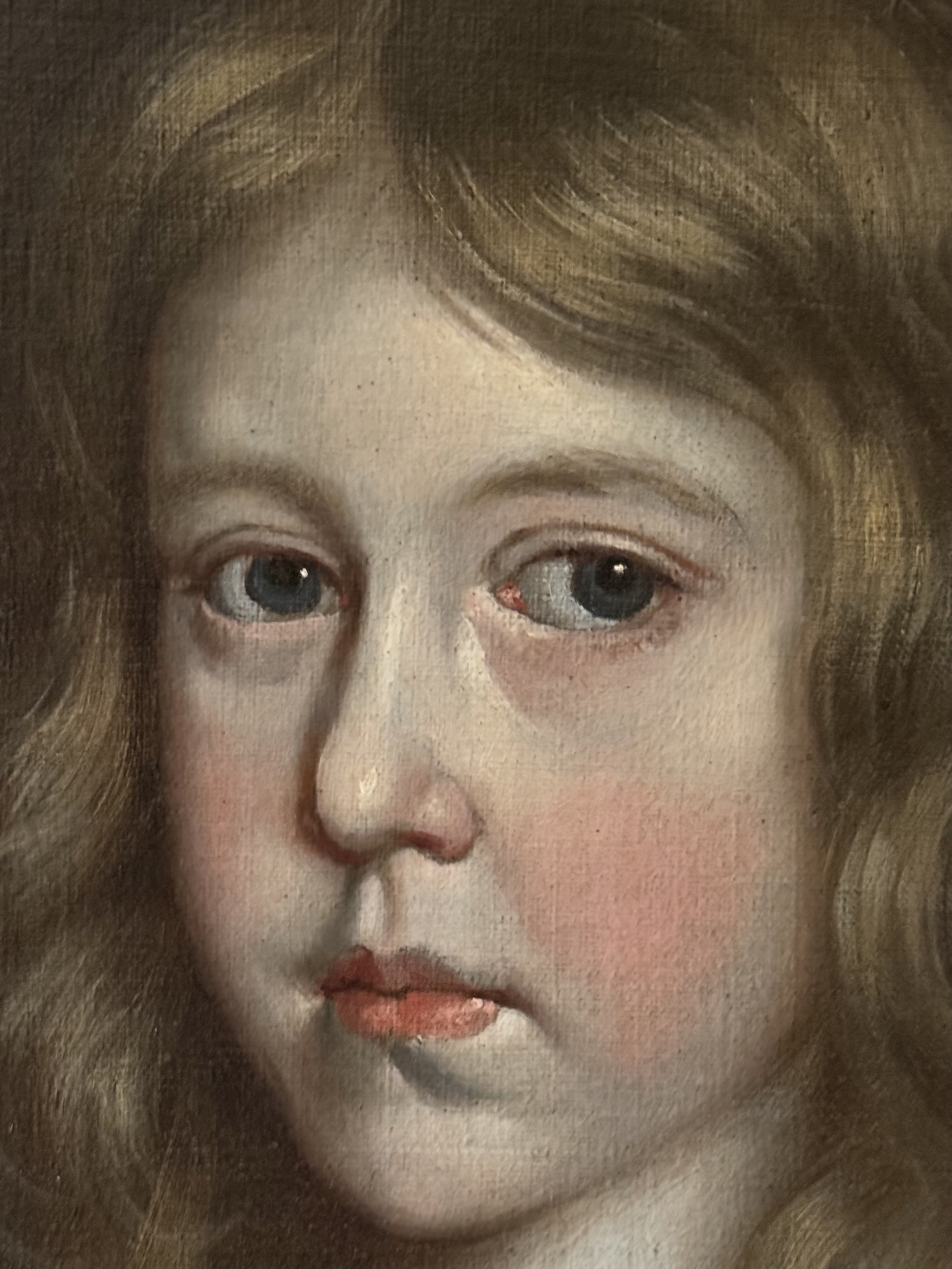
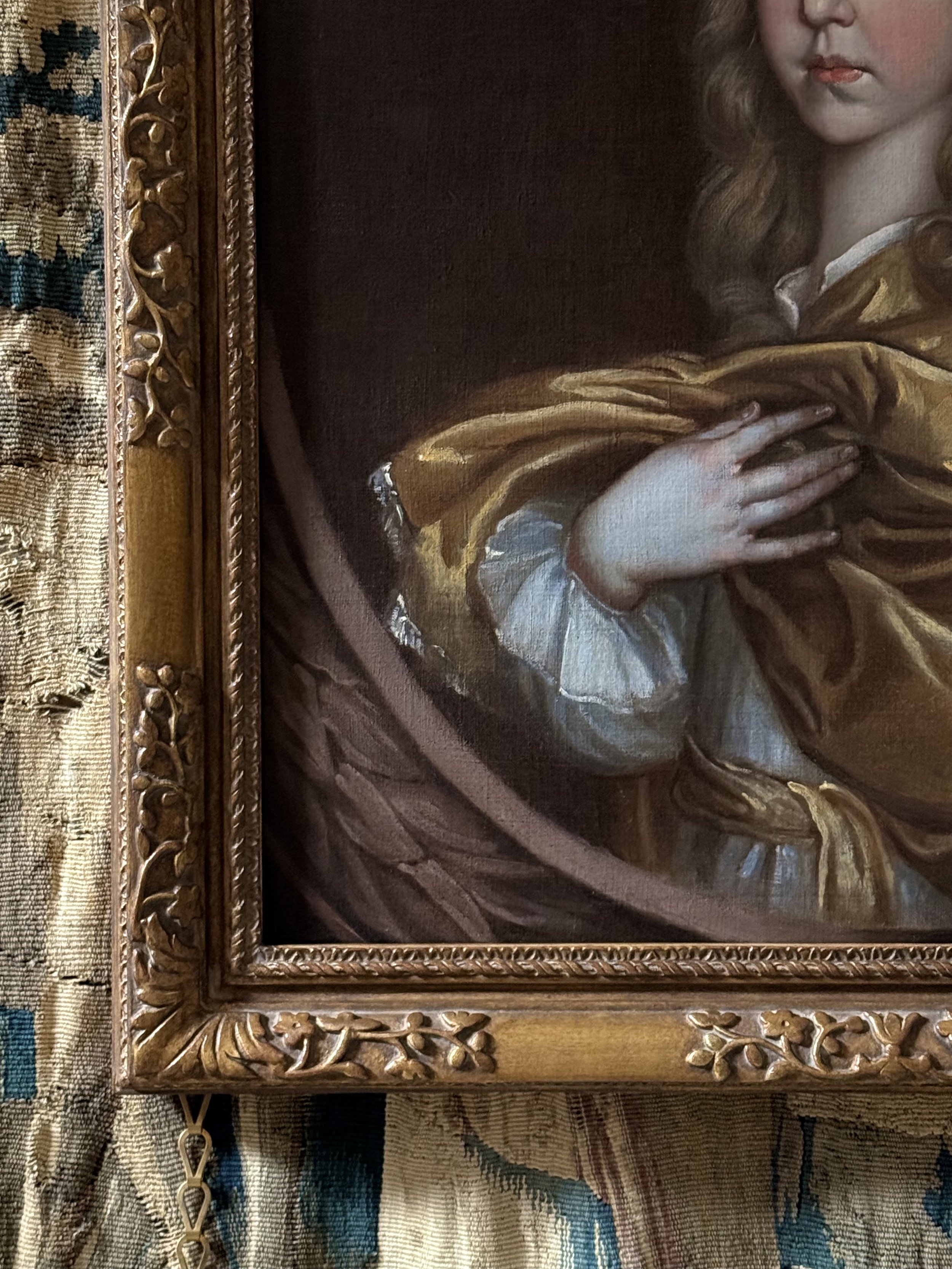
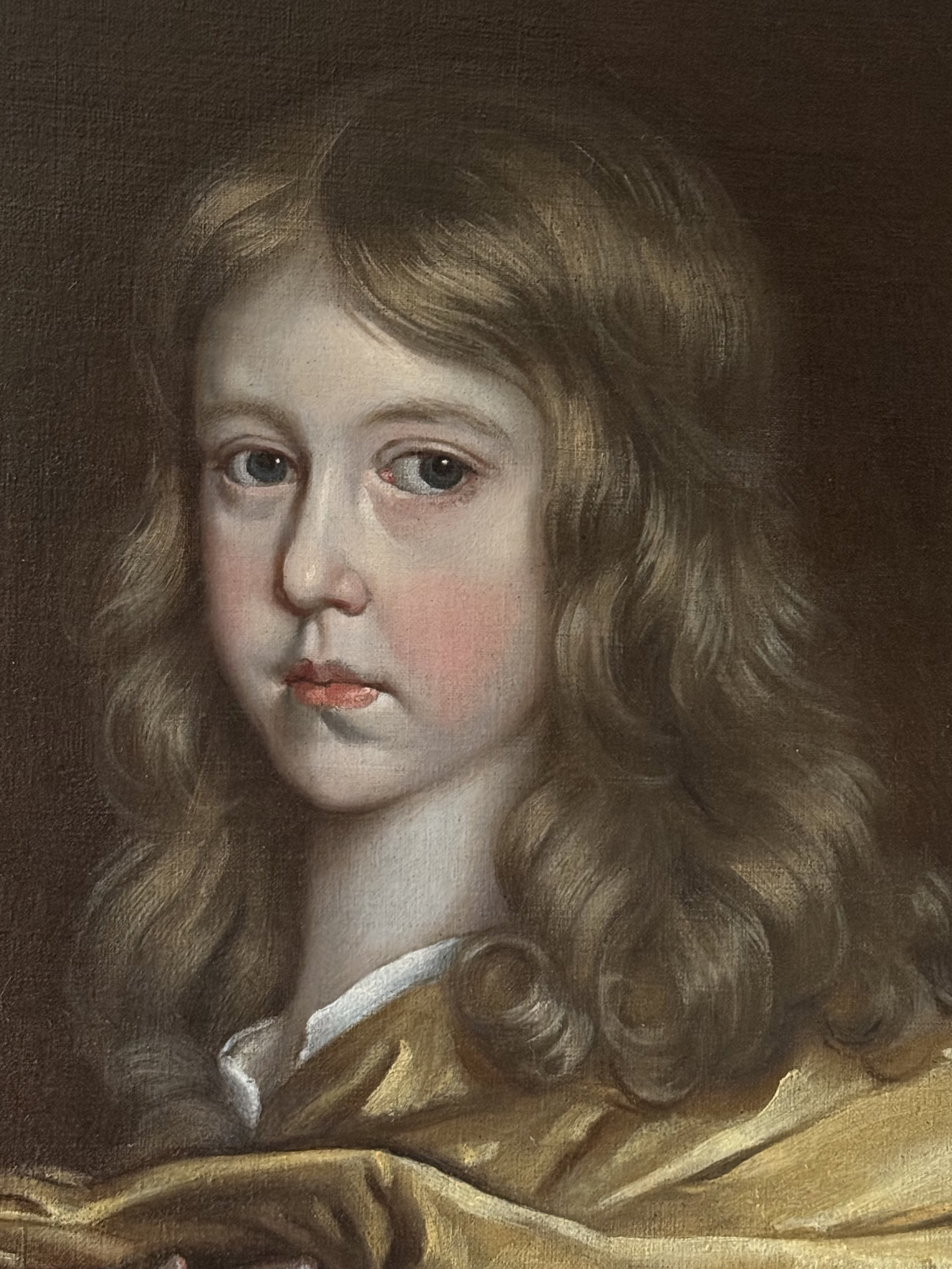
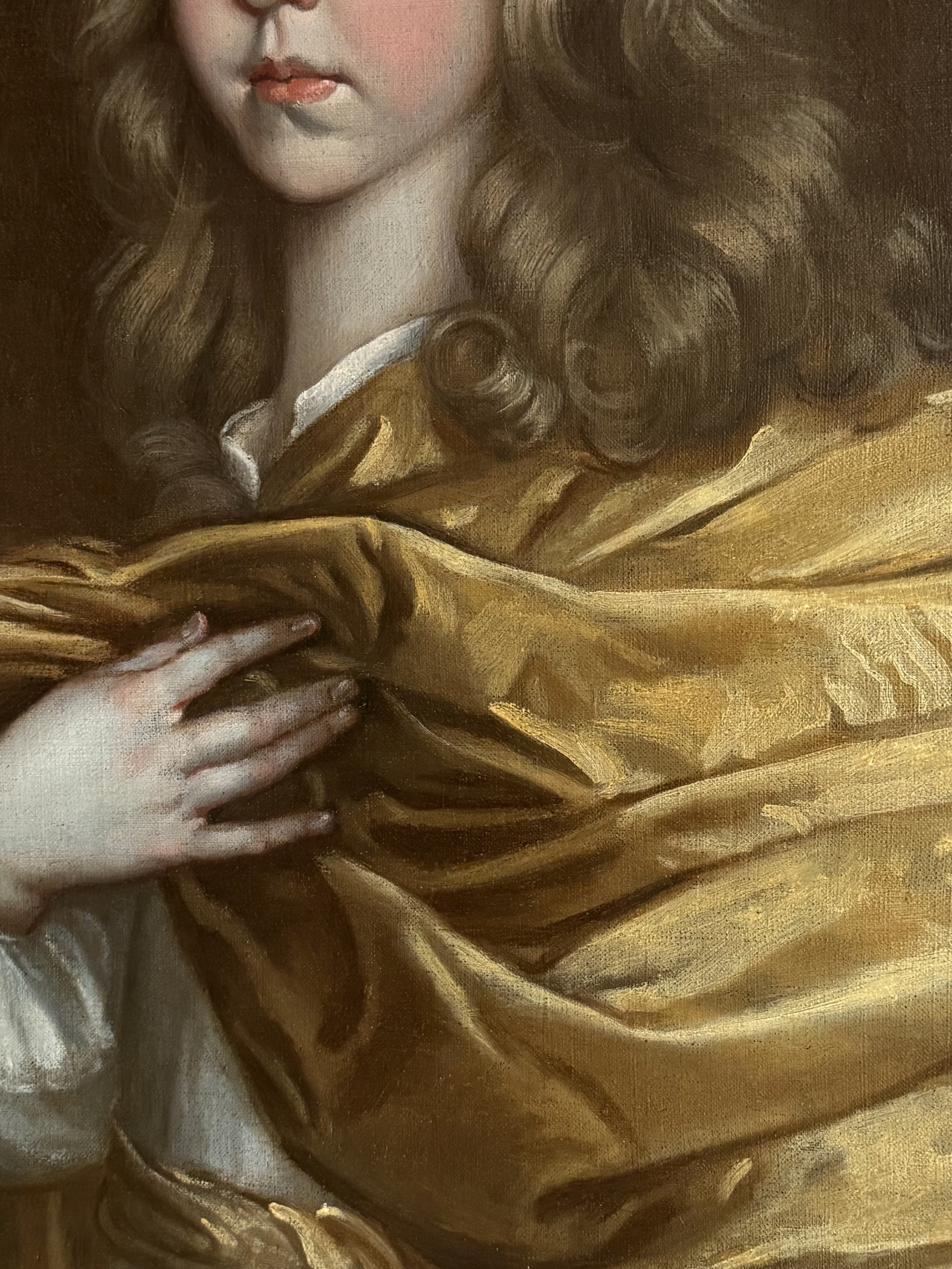
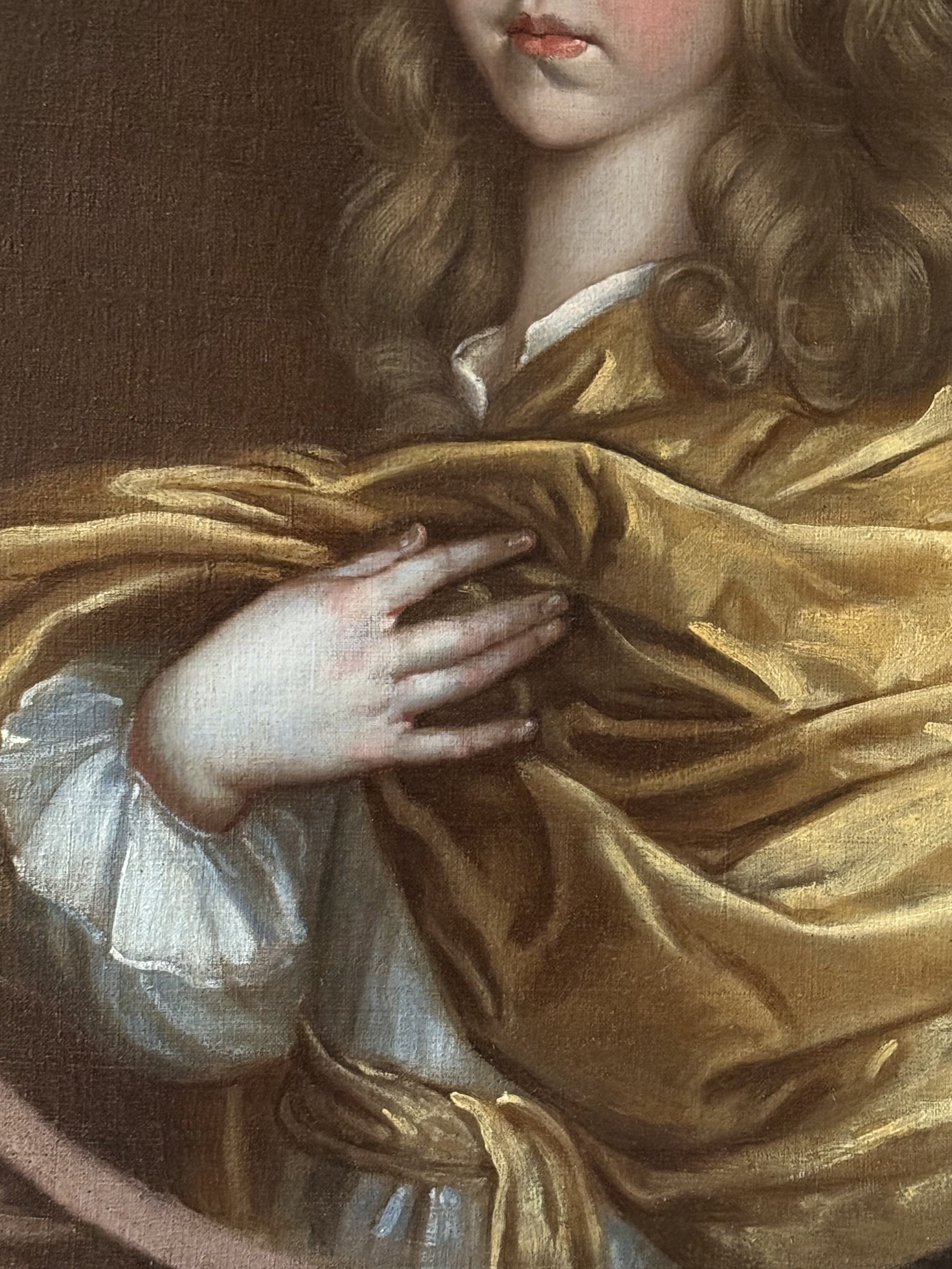



JOHANNES MYTENS (1614-1670) - A BOY WITH YELLOW DRAPERY.
Portrait of a young boy with yellow silk drapery attributed to the Dutch Golden Age painter Johannes Mytens (1614-1670)
The handsome sitter is depicted half length within a feigned laurel cartouche his head half turned with his gaze meeting the viewer. With his pale skin, languid eyes full flushed cheeks and fleshy lips he is the very definition of mid 17th century beauty.
His blonde hair is worn shoulder length with a centre parting which curves away from each side of the crown, leaves his brows and cheeks clearly visible. Rather than wearing the contemporary fashions (dress) of the period the handsome young sitter wears a more generalised form of drapery (costume) which was popular in paintings from the 1650’s onwards.
The sitters white shirt, with its sleeves that balloon at the wrist, may echo contemporary fashions but his golden belted sash implies that the sitter is infect wiring a tunic akin to Perisan dress. His voluminous shimmering yellow silk cloak / fabric is clearly more akin to costume and the timlessness of the hand gesture which he uses to secure it across his chest adds a sense of gravitas..reminiscent of Roman dress.
This pose can be traced back to the work of Van Dyck, whose series of prints Icones Principum Virorum would have been widely admired and circulated. It makes sense that an artist in the orbit of Van Dyck, favours a similar aesthetic of dramatic draperies and ‘costume’ rather than fashion.
Johannes Mytens (1614-1670)
Mytens was born in The Hague. According to Houbraken, Johannes (Jan) Mijtens was trained by Anthony van Opstal and later by Nicolas van der Horst. Both of his uncles, Isaac Mijtens and Daniël Mijtens, were painters, and his son Cornelis became an engraver. This statement has often been repeated by various art historians, but unfortunately, Houbraken mixed up his notes on this artist with his notes on Jan Meyssens, the engraver. This Jan Mytens did not have a son Cornelis who was a good engraver. That was Jan Meyssens (and the Meyssens lived in Antwerp, not the Hague).
Mytens became a member of The Hague Guild of Saint Luke in 1642 and helped set up the Confrerie Pictura. He painted for Dutch royalty and specialized in portraiture, genre pieces, and historical allegories. Mytens was especially skilled at rendering the clothing of affluent Dutch. According to the RKD, his students were Nicolaes Lissant, Gerard de Nijst, Adriaen Stalpert van der Wiele, Pouwels van de Velde, Andries Thijsz. de Wit, and Urbanus Talibert van Yperen. He died in The Hague.
This fine quality and richly coloured portrait is in an excellent state of conservation. It is ready to hang in a later quality ‘Lely’ style gilded frame.
Higher resolution images on request. Worldwide shipping available.
I am most grateful to Jacqui Ansell Costume Historian and formerly Senior Lecturer, Christie’s Education for the detailed information and analysis that she has provided on fashion and costume.
Provenance: Private collection Belgium.
Canvas: 70cm x 65cm. Framed: 86cm x 74cm.
Price: £16,000

